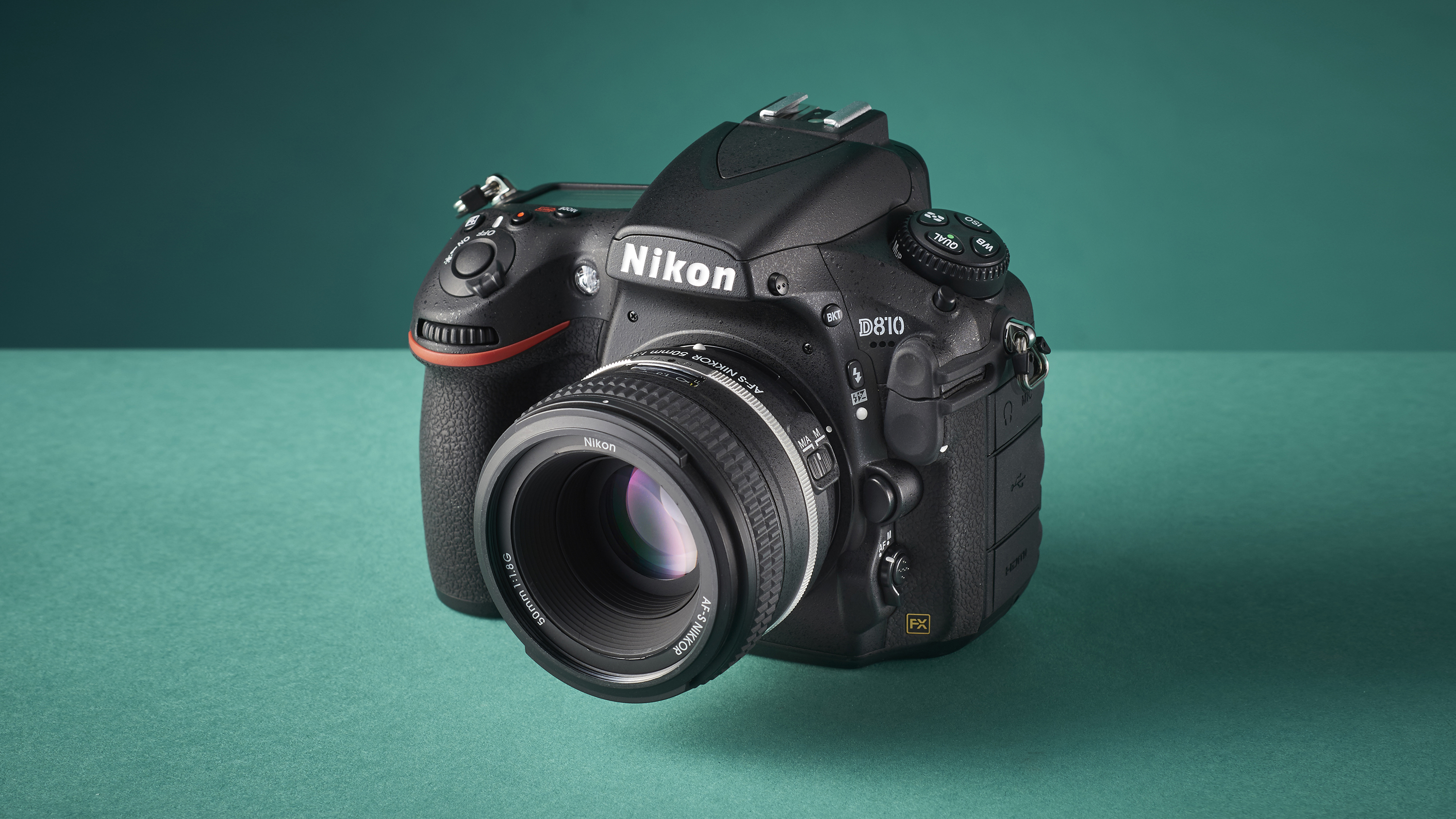Why you can trust TechRadar
We shoot a specially designed chart in carefully controlled conditions and the resulting images are analysed using DXO Analyzer software to generate the data to produce the graphs below.
A high signal to noise ratio (SNR) indicates a cleaner and better quality image.
For more more details on how to interpret our test data, check out our full explanation of our noise and dynamic range tests.
We have compared the Nikon D810 with the Nikon D800, Canon 5D Mark III and Sony Alpha 7R. The D810 has a large sensitivity range, stretching down lower than any other camera here - to ISO 32 - and up as high as ISO 51,200. The Canon beats its top setting, reaching up to ISO 102,400.
JPEG signal to noise ratio

As we can see from this chart, the Nikon D810's JPEG files have the weakest signal to noise ratio of the three cameras at lower sensitivity settings. But the camera's JPEGs overtake the Sony Alpha 7R at ISO 1600 and above, beat the Canon 5D Mark III at ISO 25,600 and outdo the older Nikon D800 by producing better ratios at ISO 25,600 and also extending its range further at the lower and upper end of the scale.
The difference that we have detected between the D810's and D800's results is likely to be explained by the slight smudging of noise in the D800's raw files. At 100% on screen the D810's images have more detail and look crisper to the eye, but the chroma noise is a little more evident.
Raw signal to noise ratio

Conversely, the signal to noise ratios of the TIFF images (after conversion from raw) from the Nikon D810 are stronger than TIFFs from the Nikon D800 at lower sensitivities, yet weaker at ISO 800 and above, falling steeply at the upper reaches of its range. The D810's TIFFs produce weaker ratios than the Canon 5D Mark III's at every sensitivity setting, and weaker signal to noise ratios than the Sony Alpha 7R's at lower ISOs, before surpassing them at ISO 400 and above.
Sign up for breaking news, reviews, opinion, top tech deals, and more.
These results differ from those produced by DXO itself, but we convert raw files to TIFF using the manufacturer's supplied software and with all the noise reduction turned off before they are analysed, whereas DXO analyse raw files directly. Raw files from the D800 also exhibit the slight smudging that we see with the JPEGs in comparison with those from the D810. The D810's images look more natural at 100% on screen.
JPEG dynamic range

The Nikon D810's JPEG results for dynamic range are again weaker than the Nikon D800's JPEGs at most sensitivities, but they have a similar range to the older camera's JPEGs at ISO 3200, 6400 and 25,600. The Nikon D810's JPEGs have a wider dynamic range than the Canon 5D Mark III's at ISO 50-200 and ISO 25,600, a similar range at ISO 400 and a smaller range at other sensitivities. Compared with the Sony Alpha 7R's JPEGs, the D810's JPEGs show a wider dynamic range at the lowest setting and at ISO 3200 and 6400, but have a smaller range at ISO 100-1600 and a similar range at ISO 12,800 and 25,600.
Raw dynamic range

Again the TIFF images (after conversion from raw) from the Nikon D810 are significantly stronger at lower sensitivities than at the higher settings, outperforming the Canon 5D Mark III for dynamic range from ISO 50 to ISO 800, where its results suddenly fall below all of the other cameras here. The Nikon D810's TIFFs show a less impressive dynamic range than the older Nikon D800's at every setting but ISO 400, and fall below the Sony Alpha 7R's TIFFs throughout the range.
